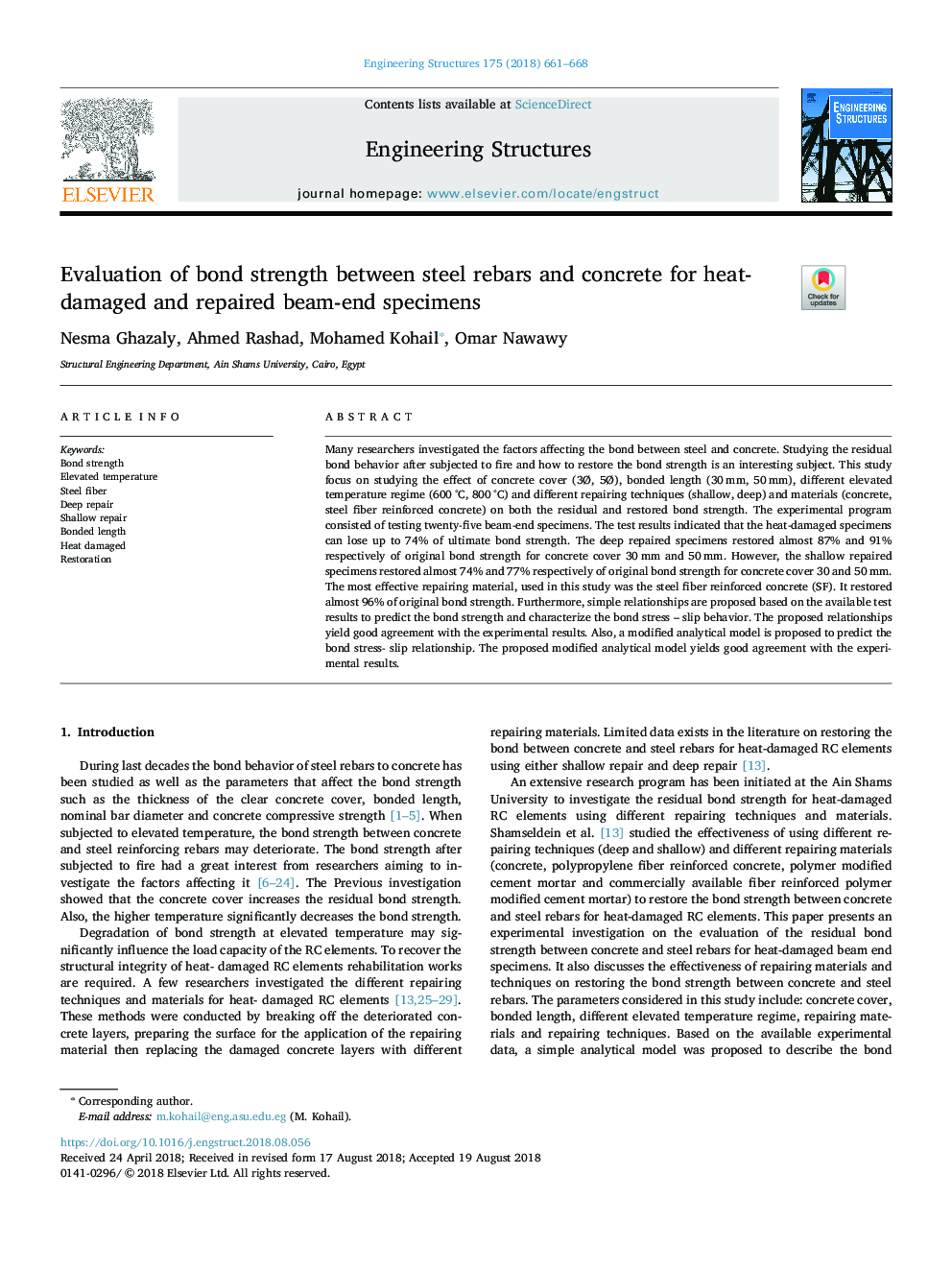| Article ID | Journal | Published Year | Pages | File Type |
|---|---|---|---|---|
| 10126916 | Engineering Structures | 2018 | 8 Pages |
Abstract
Many researchers investigated the factors affecting the bond between steel and concrete. Studying the residual bond behavior after subjected to fire and how to restore the bond strength is an interesting subject. This study focus on studying the effect of concrete cover (3Ã, 5Ã), bonded length (30â¯mm, 50â¯mm), different elevated temperature regime (600â¯Â°C, 800â¯Â°C) and different repairing techniques (shallow, deep) and materials (concrete, steel fiber reinforced concrete) on both the residual and restored bond strength. The experimental program consisted of testing twenty-five beam-end specimens. The test results indicated that the heat-damaged specimens can lose up to 74% of ultimate bond strength. The deep repaired specimens restored almost 87% and 91% respectively of original bond strength for concrete cover 30â¯mm and 50â¯mm. However, the shallow repaired specimens restored almost 74% and 77% respectively of original bond strength for concrete cover 30 and 50â¯mm. The most effective repairing material, used in this study was the steel fiber reinforced concrete (SF). It restored almost 96% of original bond strength. Furthermore, simple relationships are proposed based on the available test results to predict the bond strength and characterize the bond stress - slip behavior. The proposed relationships yield good agreement with the experimental results. Also, a modified analytical model is proposed to predict the bond stress- slip relationship. The proposed modified analytical model yields good agreement with the experimental results.
Related Topics
Physical Sciences and Engineering
Earth and Planetary Sciences
Geotechnical Engineering and Engineering Geology
Authors
Nesma Ghazaly, Ahmed Rashad, Mohamed Kohail, Omar Nawawy,
